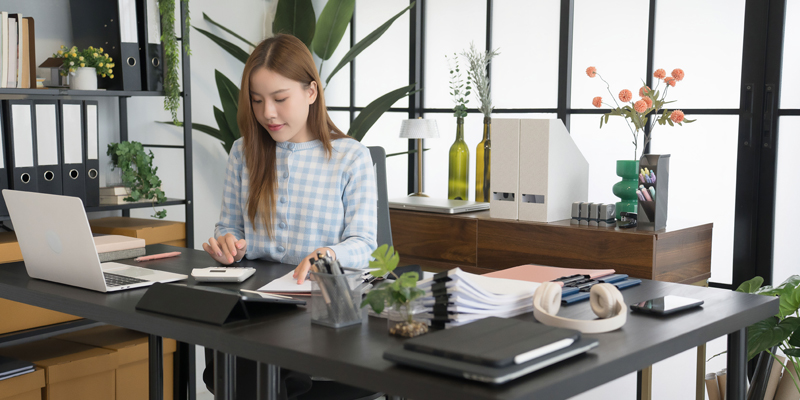Creating a Functional and Comfortable Workspace
As remote work becomes more common, creating a functional and comfortable home office is essential. A well-designed workspace can improve productivity, creativity, and overall well-being. Whether you’re transforming a room or setting up a small nook, these six ideas will help you design a workspace that blends functionality and comfort.
1. How to Choose the Best Location for a Home Office
The location of your home office plays a crucial role in productivity. Opt for a quiet spot that minimizes distractions and provides plenty of light. Position your desk near a window for natural light, which enhances mood and focus, or use quality task lighting if natural light isn’t available.
2. Benefits of Ergonomic Furniture in a Home Office
Ergonomics is key to a comfortable home office setup. Invest in an adjustable chair and desk to reduce strain during long hours. Ensure your monitor is at eye level and your chair offers lumbar support to prevent back pain and other work-related issues.
3. Boost Productivity with Indoor Plants in Your Workspace
Adding plants to your home office not only improves aesthetics but also enhances productivity and reduces stress. Indoor plants like succulents or snake plants are low-maintenance options that improve air quality and bring a natural touch to your workspace.
4. How Personalizing Your Home Office Can Increase Motivation
Personalizing your workspace with meaningful decor, like family photos or inspirational quotes, makes your environment more enjoyable. A personalized office reflects your personality, creating a more engaging space that boosts focus and creativity.
5. Organization Tips for a Clutter-Free Home Office
Keeping your workspace organized is essential for maintaining focus. Use shelves, filing systems, and desk organizers to declutter your area. A tidy environment promotes mental clarity and reduces distractions caused by a messy desk.
6. Best Lighting for a Productive Home Office Setup
Proper lighting is vital for a productive home office. While natural light is ideal, use a combination of ambient and task lighting to supplement it. Desk lamps or adjustable floor lamps help reduce eye strain, while warmer lighting creates a cozy, inviting atmosphere.
